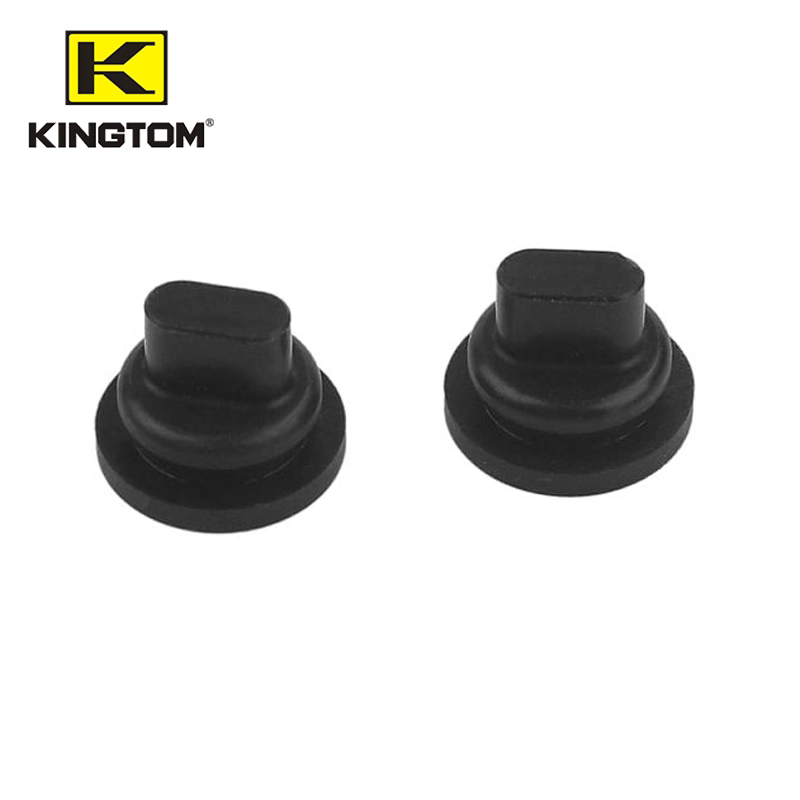The Essential Guide to Automotive Rubber Plugs: Protection, Performance, and Practicality
2024-08-14
In the world of automotive maintenance and repair, even the smallest components play a critical role in ensuring a vehicle's optimal performance. Among these seemingly minor yet essential parts are automotive rubber plugs. These unassuming components are vital for various functions, from protection against contaminants to enhancing vehicle performance. Let’s dive into the world of automotive rubber plugs and explore their significance in the automotive industry.
What Are Automotive Rubber Plugs?
Automotive rubber plugs are small, typically cylindrical or round pieces made from rubber or elastomeric materials. They are used to seal or block openings in various automotive systems and components. These plugs come in different sizes, shapes, and materials to suit specific applications, ensuring a secure and reliable seal.
Key Functions of Automotive Rubber Plugs
1. Contaminant Protection:
One of the primary functions of rubber plugs is to protect critical components from contaminants such as dirt, moisture, and debris. For example, plugs used in engine ports or hydraulic systems prevent foreign substances from entering and causing potential damage.
2. Fluid Retention:
Rubber plugs are often used to seal fluid reservoirs or ports, ensuring that fluids such as coolant, oil, and transmission fluid remain contained and do not leak. Proper sealing is crucial for maintaining fluid levels and preventing leaks, which can lead to performance issues or engine damage.
3. Pressure Maintenance:
In some automotive systems, rubber plugs help maintain internal pressure by providing a secure seal. This is important for components that operate under pressure, such as brake systems or fuel lines, where leaks could compromise safety and functionality.
4. Component Protection During Storage:
When automotive parts are stored or transported, rubber plugs are used to cover openings and protect the components from damage. This is especially important for parts that are sensitive to environmental conditions or physical impacts.
5. Customization and Modification:
Rubber plugs can be used in custom automotive projects or modifications to fill unused holes or openings. They provide a neat and professional finish while preventing potential issues such as rust or debris accumulation.
Types of Automotive Rubber Plugs
1. Cap Plugs:
These are designed to cover and seal the ends of pipes or tubes. They come in various sizes to fit different diameters and provide a secure seal to prevent leakage or contamination.
2. Grommet Plugs:
Grommet plugs are used to seal holes or openings in panels or housings. They often feature a flange or lip that fits snugly into the hole, ensuring a tight seal.
3. Blind Plugs:
These plugs are used to cover unused threaded or non-threaded holes. They provide a simple and effective way to close off openings without requiring additional hardware.
4. Drain Plugs:
Drain plugs are specifically designed to seal drain holes, preventing leaks and protecting the surrounding area from contaminants. They are commonly used in oil pans, transmission housings, and other fluid reservoirs.
5. Custom Plugs:
For specialized applications, custom rubber plugs can be manufactured to meet specific requirements. These may include unique shapes, sizes, or material properties tailored to particular automotive needs.
Choosing the Right Automotive Rubber Plug
When selecting automotive rubber plugs, consider the following factors:
1. Material Compatibility:
Ensure that the rubber material is compatible with the fluids, chemicals, or environmental conditions it will be exposed to. Common materials include nitrile rubber, silicone, and EPDM (ethylene propylene diene monomer), each offering different properties and resistances.
2. Size and Fit:
Accurate measurements are crucial for a proper fit. Choose plugs that match the dimensions of the opening or component they are intended to seal. An improper fit can lead to leaks or ineffective sealing.
3. Temperature Resistance:
Consider the temperature range in which the plug will operate. Some rubber materials are designed to withstand high or low temperatures without losing their sealing properties.
4. Ease of Installation:
Choose plugs that are easy to install and remove. This is especially important for applications where frequent maintenance or adjustments are required.
In Conclusion
Automotive rubber plugs may seem like small components, but their role in vehicle maintenance and performance is undeniably significant. By providing protection, preventing leaks, and enhancing component functionality, these plugs contribute to the overall reliability and efficiency of automotive systems. Whether you’re a DIY enthusiast, a professional mechanic, or an automotive manufacturer, understanding the importance and proper use of rubber plugs can help ensure that every vehicle operates smoothly and efficiently.
Incorporating the right rubber plugs into your automotive projects or repairs not only safeguards your vehicle’s components but also enhances its overall performance. So, the next time you work on a vehicle, remember that those small rubber plugs are working hard behind the scenes to keep everything running smoothly.



